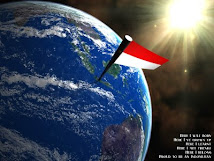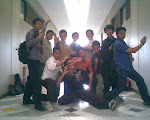Central for Research and Development for Winning
Nobel Prize in Physics at Indonesia
| "Dalam pengakuan atas jasa besarnya dalam teori dan eksperimen menginvestigasi konduksi listrik oleh gas". |
J. J. Thomson
 | |
| Born | 18 December 1856 Cheetham Hill, Manchester, UK |
| Died | 30 August 1940 (aged 83) Cambridge, UK |
| Nationality | British |
| Fields | Physics |
| Institutions | Cambridge University |
| Alma mater | University of Manchester University of Cambridge |
| Academic advisors | John Strutt (Rayleigh) Edward John Routh |
| Notable students | Charles Glover Barkla Charles T. R. Wilson Ernest Rutherford Francis William Aston John Townsend J. Robert Oppenheimer Owen Richardson William Henry Bragg H. Stanley Allen John Zeleny Daniel Frost Comstock Max Born T. H. Laby Paul Langevin Balthasar van der Pol Geoffrey Ingram Taylor |
| Known for | Plum pudding model Discovery of electron Discovery of isotopes Mass spectrometer invention First m/e measurement Proposed first waveguide Thomson scattering Thomson problem Coining term 'delta ray' Coining term 'epsilon radiation' Thomson (unit) |
| Notable awards | Nobel Prize for Physics (1906) |
Signature | |
Notes Thomson is the father of Nobel laureate George Paget Thomson. | |
Joseph John Thomson (1856-1940) ialah seorang ilmuwan yang lahir di Cheetham Hill, di mana ia diangkat sebagai profesor fisika eksperimental sejak 1884. Penelitiannya membuahkan penemuan elektron. Thomson mengetahui bahwa gas mampu menghantar listrik. Ia menjadi perintis ilmu fisika nuklir. Thomson memenangkan Hadiah Nobel Fisika pada tahun 1906.
Biografi
Joseph John Thomson lahir di Creetham Hill, pinggiran kota Manchester pada tanggal 18 Desember 1856. Dia mendaftar di Owens College, Manchester tahun 1870, dan tahun 1876 mendaftar di Trinity College, Cambridge sebagai pelajar biasa. Dia menjadi anggota Trinity College tahun 1880, ketika dia menjadi penerima Penghargaan Wrangler dan Smith (ke-2). Dia tetap menjadi anggota Trinity College seumur hidupnya. Dia menjadi penceramah tahun 1883, dan menjadi profesor tahun 1918. Dia adalah professor fisika eksperimental di laboratorium Cavendish, Cambridge, dimana dia menggantikan John Strutt, 3rd Baron Rayleigh, dari tahun 1884 sampai tahun 1918 dan menjadi profesor fisika terhormat di Cambridge dan Royal Institution, London.
Thomson baru-baru itu tertarik pada struktur atom yang direfleksikan dalam bukunya, yang berjudul Treatise on the Motion of Vortex Rings yang membuatnya memenangkan Adams Prize tahun 1884. Bukunya yang berjudul Application of Dynamics to Physics and Chemistry terbit tahun 1886, dan di tahun 1892 dia menerbitkan buku berjudul Notes on Recent Researches in Electricity and Magnetism. Pekerjaan belakangan ini membungkus hasil-hasil yang didapat berikutnya sampai pada kemunculan risalat James Clerk Maxwell yang terkenal dan sering disebut sebagai jilid ketiga Maxwell. Thomson bekerja sama dengan Professor J.H. Poynting untuk menulis buku fisika dalam empat jilid, berjudul Properties of Matter dan tahun 1895, dia menghasilkan buku Elements of the Mathematical Theory of Electricity and Magnetism, edisi kelima yang terbit di tahun 1921.
Tahun 1896, Thomson mengunjungi Amerika Serikat untuk memberikan kursus dari empat ceramah, yang meringkaskan penelitian-penelitian barunya di Universitas Princeton. Ceramahnya ini berikutnya diterbitkan dengan judul Discharge of Electricity through Gases (1897). Sekembalinya dari Amerika Serikat, dia memperoleh pekerjaan paling brilian dalam hidupnya, yaitu mempelajari memuncaknya sinar katode pada penemuan elektron, yang dibicarakan selama kursus pada ceramah malamnya sampai Royal Instution pada hari Jumat, 30 April 1897. Bukunya Conduction of Electricity through Gases terbit tahun 1903, diceritakan oleh Lord Rayleigh sebagai sebuah tinjauan atas "hari-hari hebatnya di Laboratorium Cavendish". Edisi berikutnya, ditulis dengan kolaborasi dengan anaknya, George, dalam dua jilid (1928 dan 1933).
Thomson kembali ke Amerika tahun 1904, untuk menyampaikan enam ceramahnya tentang kelistrikan dan zat di Universitas Yale. Ceramah itu memuat beberapa pernyataan penting tentang struktur atom. Dia menemukan sebuah metode untuk memisahkan jenis atom-atom dan molekul-molekul yang berbeda, dengan menggunakan sinar positif, sebuah ide yang dikembangkan oleh Francis Aston, Dempster dan lainnya, yang menuju pada banyak penemuan isotop. Dan lagi, untuk itu hanya disebutkan dan dia menulis buku-buku, seperti The Structure of Light (1907), The Corpuscular Theory of Matter (1907), Rays of Positive Electricity (1913), The Electron in Chemistry (1923) dan otobiografinya, dan buku Recollections and Reflections (1936), di antara banyak terbitan lainnya. Thomson, seorang penerima perintah atas jasa, dilantik tahun 1908.
Dia dipilih menjadi anggota Royal Society tahun 1884 dan menjadi presiden selama 1916-1920; dia memperoleh medali Royal and Hughes pada tahun 1894 dan 1902, dan memperoleh Medali Copley tahun 1914. Dia dianugerahi Medali Hodgkins (Smithsonian Institute, Washington) tahun 1902; Medali Franklin dan Medali Scott (Philadelphia), 1923; Medali Mascart (Paris), 1927; Medali Dalton (Manchester), 1931; dan Medali Faraday (Institute of Civil Engineers) pada tahun 1938. Dia adalah Presiden British Association tahun 1909 (dan dari bagian A tahun 1896 dan 1931) dan dia memegang gelar Doktor Kehormatan dari Universitas Oxford, Dublin, London, Victoria, Columbia, Cambridge, Durham, Birmingham, Göttingen, Leeds, Oslo, Sorbonne, Edinburgh, Reading, Princeton, Glasgow, Johns Hopkins, Aberdeen, Kraków, dan Philadelphia.
Pada tahun 1890, dia menikahi Rose Elisabeth, putir Sir George E. Paget, K.C.B. Mereka dianugerahi seorang putera, sekarang Sir George Paget Thomson, profesor emeritus untuk fisika di Universitas London, yang juga dianugerahi Nobel Fisika tahun 1937, dan seorang puteri.
J. J. Thomson meninggal dunia pada tanggal 30 Agustus 1940.
Every day that passes witnesses electricity obtaining an ever-increasing importance in practical life. The conceptions, which a few decades ago were the subject of investigation in the quiet studies or laboratories of sundry learned men, have by this time become the property of the public at large, who will soon be as familiar with them as with their ordinary weights and measures. Still greater however are the revolutions brought about by electricians' labours in the sphere of science. Immediately after Örsted's epochmaking discovery of the influence of the electric current on a magnetic needle (1820), Ampere, the ingenious French investigator, promulgated a theory explaining magnetic phenomena as results of electrical agencies.
The investigations of Maxwell, the brilliantly gifted Scotch physicist (1873), were still more far-reaching in their effect, for by them the phenomenon of light was proved to be dependent upon electromagnetic undulatory movements in the ether. There is reason to believe that the grand discoveries of the last few years respecting the discharge of electricity through gases will prove to be of equally great, or perhaps still greater, importance, throwing as they do a great deal of light upon our conception of matter. In this domain Professor J.J. Thomson of Cambridge, this year's Prize-winner in Physics, has made most valuable contributions through his investigations and researches, which he has assiduously pursued for many years past.
By Faraday's great discovery in the year 1834 it had been shown that every atom carries an electric charge as large as that of the atom of hydrogen gas, or else a simple multiple of it corresponding to the chemical valency of the atom. It was, then, natural to speak, with the immortal Helmholtz, of an elementary charge or, as it is also called, an atom of electricity, as the quantity of electricity inherent in an atom of hydrogen gas in its chemical combinations.
Faraday's law may be expressed thus, that a gram of hydrogen, or a quantity equivalent thereto of some other chemical element, carries an electric charge of 28,950 x 1010 electrostatic units. Now if we only knew how many hydrogen atoms there are in a gram, we could calculate how large a charge there is in every hydrogen atom. The kinetic gas theory, a field of investigation as popular as any among the scientists of the century recently ended, is based upon the assumption that the gases consist of freely moving molecules, the impact of which on the walls of the encompassing vessel is recognizable as the pressure of the gas. From this the velocity of the gas molecules could be calculated with great accuracy.
From the velocity with which one gas diffuses in another, and from other closely allied phenomena, it was further possible to calculate the volume of space occupied by the molecules, and by that means the investigator was enabled to form an idea of the mass of the molecules and consequently of the number of molecules to be found in one gram of a chemical substance, such as, e.g. hydrogen. The figures thus obtained could not however lay claim to any great amount of accuracy and were regarded by many scientists as purely conjectural. If it had been possible to calculate the number of molecules in a drop of water by the aid of an exceedingly powerful microscope, the case would of course have been quite otherwise.
But there was not the remotest hope of the investigator ever being successful in doing that, and thus the existence of the molecules was regarded as very problematical. If from the figures quoted by the champions of the kinetic gas-theory as the most probable ones for the sizes of molecules and atoms we calculate how large a quantity of electricity is carried by one hydrogen atom, we arrive at the conclusion that the atom charge lies between 1,3 X 10-10 and 6,1 X 10-10 electrostatic units.
What no one regarded as probable has however been achieved by J.J. Thomson by devious methods. Richard von Helmholtz found out, as long ago as 1887, that electrically charged small particles possess the remarkable property of condensing steam around them. J.J. Thomson and his pupil C.T.R. Wilson took up the study of this phenomenon. By the aid of Röntgen rays they procured some electrically charged small particles in air.
Thomson assumes that each of those particles carries an electrical unit charge. By electrical measurements he was able to determine how great the electric charge was in a given quantity of air. Then, by means of a sudden expansion of the air, which was saturated with steam, he effected a condensation of the steam on the electrically charged small particles, the size of which he could calculate from the velocity with which they sank. Now as he knew the amount of water condensed and the size of each drop, it was not difficult to calculate the number of drops.
That number was the same as that of the electrically charged small particles. Having before determined the total quantity of electricity in the vessel, he could easily reckon out what quantity there was in each drop or, previously, in every small particle, that is to say the atomic charge. That was thus found to be 3,4 x 10 -10 electrostatic units. This value is very close to the mean of the values previously obtained by the kinetic gas-theory, rendering the correctness of these different measurements and the accuracy of the reasoning employed in their determination in a very high degree probable.
Now, even if Thomson has not actually beheld the atoms, he has nevertheless achieved work commensurable therewith, by having directly observed the quantity of electricity carried by each atom. By the aid of this observation the number has been determined of the molecules in a cubic centimetre of gas at a temperature of zero and under the pressure of one atmosphere; that is to say, there has been thereby calculated what is perhaps the most fundamental natural constant in the material world.
That number amounts to not less than forty trillions (40 x 1018 By means of a series of exceedingly ingenious experiments, Professor Thomson, aided by his numerous pupils, has determined the most important properties (such as mass and velocity under the influence of a given force), of these electrically charged small particles, which are produced in gases by various methods, e.g. by Röntgen rays, Becquerel rays, ultraviolet light, needle-point discharge and incandescent metals.
The most remarkable of these electrically charged small particles are those constituting the cathode rays in highly rarefied gases. These small particles are called electrons and have been made the object of very thorough-going researches on the part of a large number of investigators, foremost of whom are Lenard, last year's Nobel Prize winner in Physics, and J.J. Thomson. These small particles are to be met with also in the so-called ß-rays, emitted by certain radioactive substances. Assuming, on the basis of Thomson's above-mentioned work, that they carry the negative unit charge, we are led to the result that they possess about a thousand times less mass than the least atoms hitherto known, viz. the atoms of hydrogen gas.
On the other hand, the least positively charged small particles we know are, according to Thomson's, Wien's and other investigators' calculations, of the same order in mass as ordinary atoms. Now, seeing that all substances yet examined are capable of giving off negatively charged electrons, Thomson was led by these circumstances to assume that the negative charge in the electrons has a real existence, whereas the charge of the positive small particles arises from a neutral atom losing one or more negative electrons with their charges. Thomson has herewith given an actual physical import to the view put forward in 1747 by Benjamin Franklin that there is only one kind of electricity, a view eagerly championed too by Edlund. The actually existing electricity is negative electricity, according to Thomson.
As early as 1892 Thomson had shown that a charged body moving forward is thereby in possession of an electromagnetic energy, which produces the effect of the mass of the body being increased. From experiments carried out by Kaufmann regarding the velocity of ß-rays from radium, Thomson concluded that the negative electrons do not possess any real, but only an apparent, mass due to their electric charge.
It might now be considered reasonable to assume that all matter is built up of negative electrons, and that consequently mass in matter was apparent and really depended on the effect of electric forces. An experiment of very great interest has moreover been made in this direction by Thomson, but his investigations of most recent date in the present year (1906) seem to intimate that only about a thousandth part of the material is apparent and due to electric forces.
Professor Thomson. As you are aware, the Royal Swedish Academy of Sciences has decided to award you the Nobel Prize in Physics for this year.
I am at a loss to explain how it is, but somehow or another the contemplation of the work you have achieved has revived in my mind a passage in the famous essay on Socrates by Xenophon, a work which you too no doubt perused in your youth. The author tells us that every time conversation turned upon the elements of the Earth, Socrates would say "of these matters we know nothing". Will the sagacity which Socrates displayed in this answer and which has been approved by all ages up to and including our own, continue to be acknowledged as the conclusion of the whole matter? Who shall say? One thing we all know, and that is, that every great period of Natural Philosophy has evolved elements of its own, and furthermore we seem to feel as though we might be at the threshold of a new such period with new elements.
In the name and on behalf of our Academy I congratulate you upon having bestowed upon the world some of the main works which are enabling the natural philosopher of our time to take up new enquiries in new directions. You have thus been worthily treading in the footsteps of your great and renowned compatriots, Faraday and Maxwell, men who set to the world of science the highest and noblest examples.
Copyright © The Nobel Foundation 1906
Thomson baru-baru itu tertarik pada struktur atom yang direfleksikan dalam bukunya, yang berjudul Treatise on the Motion of Vortex Rings yang membuatnya memenangkan Adams Prize tahun 1884. Bukunya yang berjudul Application of Dynamics to Physics and Chemistry terbit tahun 1886, dan di tahun 1892 dia menerbitkan buku berjudul Notes on Recent Researches in Electricity and Magnetism. Pekerjaan belakangan ini membungkus hasil-hasil yang didapat berikutnya sampai pada kemunculan risalat James Clerk Maxwell yang terkenal dan sering disebut sebagai jilid ketiga Maxwell. Thomson bekerja sama dengan Professor J.H. Poynting untuk menulis buku fisika dalam empat jilid, berjudul Properties of Matter dan tahun 1895, dia menghasilkan buku Elements of the Mathematical Theory of Electricity and Magnetism, edisi kelima yang terbit di tahun 1921.
Tahun 1896, Thomson mengunjungi Amerika Serikat untuk memberikan kursus dari empat ceramah, yang meringkaskan penelitian-penelitian barunya di Universitas Princeton. Ceramahnya ini berikutnya diterbitkan dengan judul Discharge of Electricity through Gases (1897). Sekembalinya dari Amerika Serikat, dia memperoleh pekerjaan paling brilian dalam hidupnya, yaitu mempelajari memuncaknya sinar katode pada penemuan elektron, yang dibicarakan selama kursus pada ceramah malamnya sampai Royal Instution pada hari Jumat, 30 April 1897. Bukunya Conduction of Electricity through Gases terbit tahun 1903, diceritakan oleh Lord Rayleigh sebagai sebuah tinjauan atas "hari-hari hebatnya di Laboratorium Cavendish". Edisi berikutnya, ditulis dengan kolaborasi dengan anaknya, George, dalam dua jilid (1928 dan 1933).
Thomson kembali ke Amerika tahun 1904, untuk menyampaikan enam ceramahnya tentang kelistrikan dan zat di Universitas Yale. Ceramah itu memuat beberapa pernyataan penting tentang struktur atom. Dia menemukan sebuah metode untuk memisahkan jenis atom-atom dan molekul-molekul yang berbeda, dengan menggunakan sinar positif, sebuah ide yang dikembangkan oleh Francis Aston, Dempster dan lainnya, yang menuju pada banyak penemuan isotop. Dan lagi, untuk itu hanya disebutkan dan dia menulis buku-buku, seperti The Structure of Light (1907), The Corpuscular Theory of Matter (1907), Rays of Positive Electricity (1913), The Electron in Chemistry (1923) dan otobiografinya, dan buku Recollections and Reflections (1936), di antara banyak terbitan lainnya. Thomson, seorang penerima perintah atas jasa, dilantik tahun 1908.
Dia dipilih menjadi anggota Royal Society tahun 1884 dan menjadi presiden selama 1916-1920; dia memperoleh medali Royal and Hughes pada tahun 1894 dan 1902, dan memperoleh Medali Copley tahun 1914. Dia dianugerahi Medali Hodgkins (Smithsonian Institute, Washington) tahun 1902; Medali Franklin dan Medali Scott (Philadelphia), 1923; Medali Mascart (Paris), 1927; Medali Dalton (Manchester), 1931; dan Medali Faraday (Institute of Civil Engineers) pada tahun 1938. Dia adalah Presiden British Association tahun 1909 (dan dari bagian A tahun 1896 dan 1931) dan dia memegang gelar Doktor Kehormatan dari Universitas Oxford, Dublin, London, Victoria, Columbia, Cambridge, Durham, Birmingham, Göttingen, Leeds, Oslo, Sorbonne, Edinburgh, Reading, Princeton, Glasgow, Johns Hopkins, Aberdeen, Kraków, dan Philadelphia.
Pada tahun 1890, dia menikahi Rose Elisabeth, putir Sir George E. Paget, K.C.B. Mereka dianugerahi seorang putera, sekarang Sir George Paget Thomson, profesor emeritus untuk fisika di Universitas London, yang juga dianugerahi Nobel Fisika tahun 1937, dan seorang puteri.
J. J. Thomson meninggal dunia pada tanggal 30 Agustus 1940.
Nobel Lecture
Nobel Lecture, December 11, 1906
Carriers of Negative Electricity
From Nobel Lectures, Physics 1901-1921, Elsevier Publishing Company, Amsterdam, 1967
In order to read the text you need Acrobat Reader.
Award Ceremony Speech
Presentation Speech by Professor J.P. Klason, President of the Royal Swedish Academy of Sciences, on December 10, 1906
Your Majesty, Your Royal Highnesses, Ladies and Gentlemen.Every day that passes witnesses electricity obtaining an ever-increasing importance in practical life. The conceptions, which a few decades ago were the subject of investigation in the quiet studies or laboratories of sundry learned men, have by this time become the property of the public at large, who will soon be as familiar with them as with their ordinary weights and measures. Still greater however are the revolutions brought about by electricians' labours in the sphere of science. Immediately after Örsted's epochmaking discovery of the influence of the electric current on a magnetic needle (1820), Ampere, the ingenious French investigator, promulgated a theory explaining magnetic phenomena as results of electrical agencies.
The investigations of Maxwell, the brilliantly gifted Scotch physicist (1873), were still more far-reaching in their effect, for by them the phenomenon of light was proved to be dependent upon electromagnetic undulatory movements in the ether. There is reason to believe that the grand discoveries of the last few years respecting the discharge of electricity through gases will prove to be of equally great, or perhaps still greater, importance, throwing as they do a great deal of light upon our conception of matter. In this domain Professor J.J. Thomson of Cambridge, this year's Prize-winner in Physics, has made most valuable contributions through his investigations and researches, which he has assiduously pursued for many years past.
By Faraday's great discovery in the year 1834 it had been shown that every atom carries an electric charge as large as that of the atom of hydrogen gas, or else a simple multiple of it corresponding to the chemical valency of the atom. It was, then, natural to speak, with the immortal Helmholtz, of an elementary charge or, as it is also called, an atom of electricity, as the quantity of electricity inherent in an atom of hydrogen gas in its chemical combinations.
Faraday's law may be expressed thus, that a gram of hydrogen, or a quantity equivalent thereto of some other chemical element, carries an electric charge of 28,950 x 1010 electrostatic units. Now if we only knew how many hydrogen atoms there are in a gram, we could calculate how large a charge there is in every hydrogen atom. The kinetic gas theory, a field of investigation as popular as any among the scientists of the century recently ended, is based upon the assumption that the gases consist of freely moving molecules, the impact of which on the walls of the encompassing vessel is recognizable as the pressure of the gas. From this the velocity of the gas molecules could be calculated with great accuracy.
From the velocity with which one gas diffuses in another, and from other closely allied phenomena, it was further possible to calculate the volume of space occupied by the molecules, and by that means the investigator was enabled to form an idea of the mass of the molecules and consequently of the number of molecules to be found in one gram of a chemical substance, such as, e.g. hydrogen. The figures thus obtained could not however lay claim to any great amount of accuracy and were regarded by many scientists as purely conjectural. If it had been possible to calculate the number of molecules in a drop of water by the aid of an exceedingly powerful microscope, the case would of course have been quite otherwise.
But there was not the remotest hope of the investigator ever being successful in doing that, and thus the existence of the molecules was regarded as very problematical. If from the figures quoted by the champions of the kinetic gas-theory as the most probable ones for the sizes of molecules and atoms we calculate how large a quantity of electricity is carried by one hydrogen atom, we arrive at the conclusion that the atom charge lies between 1,3 X 10-10 and 6,1 X 10-10 electrostatic units.
What no one regarded as probable has however been achieved by J.J. Thomson by devious methods. Richard von Helmholtz found out, as long ago as 1887, that electrically charged small particles possess the remarkable property of condensing steam around them. J.J. Thomson and his pupil C.T.R. Wilson took up the study of this phenomenon. By the aid of Röntgen rays they procured some electrically charged small particles in air.
Thomson assumes that each of those particles carries an electrical unit charge. By electrical measurements he was able to determine how great the electric charge was in a given quantity of air. Then, by means of a sudden expansion of the air, which was saturated with steam, he effected a condensation of the steam on the electrically charged small particles, the size of which he could calculate from the velocity with which they sank. Now as he knew the amount of water condensed and the size of each drop, it was not difficult to calculate the number of drops.
That number was the same as that of the electrically charged small particles. Having before determined the total quantity of electricity in the vessel, he could easily reckon out what quantity there was in each drop or, previously, in every small particle, that is to say the atomic charge. That was thus found to be 3,4 x 10 -10 electrostatic units. This value is very close to the mean of the values previously obtained by the kinetic gas-theory, rendering the correctness of these different measurements and the accuracy of the reasoning employed in their determination in a very high degree probable.
Now, even if Thomson has not actually beheld the atoms, he has nevertheless achieved work commensurable therewith, by having directly observed the quantity of electricity carried by each atom. By the aid of this observation the number has been determined of the molecules in a cubic centimetre of gas at a temperature of zero and under the pressure of one atmosphere; that is to say, there has been thereby calculated what is perhaps the most fundamental natural constant in the material world.
That number amounts to not less than forty trillions (40 x 1018 By means of a series of exceedingly ingenious experiments, Professor Thomson, aided by his numerous pupils, has determined the most important properties (such as mass and velocity under the influence of a given force), of these electrically charged small particles, which are produced in gases by various methods, e.g. by Röntgen rays, Becquerel rays, ultraviolet light, needle-point discharge and incandescent metals.
The most remarkable of these electrically charged small particles are those constituting the cathode rays in highly rarefied gases. These small particles are called electrons and have been made the object of very thorough-going researches on the part of a large number of investigators, foremost of whom are Lenard, last year's Nobel Prize winner in Physics, and J.J. Thomson. These small particles are to be met with also in the so-called ß-rays, emitted by certain radioactive substances. Assuming, on the basis of Thomson's above-mentioned work, that they carry the negative unit charge, we are led to the result that they possess about a thousand times less mass than the least atoms hitherto known, viz. the atoms of hydrogen gas.
On the other hand, the least positively charged small particles we know are, according to Thomson's, Wien's and other investigators' calculations, of the same order in mass as ordinary atoms. Now, seeing that all substances yet examined are capable of giving off negatively charged electrons, Thomson was led by these circumstances to assume that the negative charge in the electrons has a real existence, whereas the charge of the positive small particles arises from a neutral atom losing one or more negative electrons with their charges. Thomson has herewith given an actual physical import to the view put forward in 1747 by Benjamin Franklin that there is only one kind of electricity, a view eagerly championed too by Edlund. The actually existing electricity is negative electricity, according to Thomson.
As early as 1892 Thomson had shown that a charged body moving forward is thereby in possession of an electromagnetic energy, which produces the effect of the mass of the body being increased. From experiments carried out by Kaufmann regarding the velocity of ß-rays from radium, Thomson concluded that the negative electrons do not possess any real, but only an apparent, mass due to their electric charge.
It might now be considered reasonable to assume that all matter is built up of negative electrons, and that consequently mass in matter was apparent and really depended on the effect of electric forces. An experiment of very great interest has moreover been made in this direction by Thomson, but his investigations of most recent date in the present year (1906) seem to intimate that only about a thousandth part of the material is apparent and due to electric forces.
Professor Thomson. As you are aware, the Royal Swedish Academy of Sciences has decided to award you the Nobel Prize in Physics for this year.
I am at a loss to explain how it is, but somehow or another the contemplation of the work you have achieved has revived in my mind a passage in the famous essay on Socrates by Xenophon, a work which you too no doubt perused in your youth. The author tells us that every time conversation turned upon the elements of the Earth, Socrates would say "of these matters we know nothing". Will the sagacity which Socrates displayed in this answer and which has been approved by all ages up to and including our own, continue to be acknowledged as the conclusion of the whole matter? Who shall say? One thing we all know, and that is, that every great period of Natural Philosophy has evolved elements of its own, and furthermore we seem to feel as though we might be at the threshold of a new such period with new elements.
In the name and on behalf of our Academy I congratulate you upon having bestowed upon the world some of the main works which are enabling the natural philosopher of our time to take up new enquiries in new directions. You have thus been worthily treading in the footsteps of your great and renowned compatriots, Faraday and Maxwell, men who set to the world of science the highest and noblest examples.
From Nobel Lectures, Physics 1901-1921, Elsevier Publishing Company, Amsterdam, 1967
Ucapan Terima Kasih;
1. DEPDIKNAS Republik Indonesia
2. Kementrian Riset dan Teknologi Indonesia
3. Lembaga Ilmu Pengetahuan Indonesia (LIPI)
4. Akademi Ilmu Pengetahuan Indonesia
5. Tim Olimpiade Fisika Indonesia
Sumber:
Wikipedia
Nobel Prize Org.
Disusun Ulang Oleh;
Arip Nurahman
Pendidikan Fisika, FPMIPA. Universitas Pendidikan Indonesia
&
Follower Open Course Ware at MIT-Harvard University, Cambridge. USA.
Semoga Bermanfaat dan Terima Kasih



















